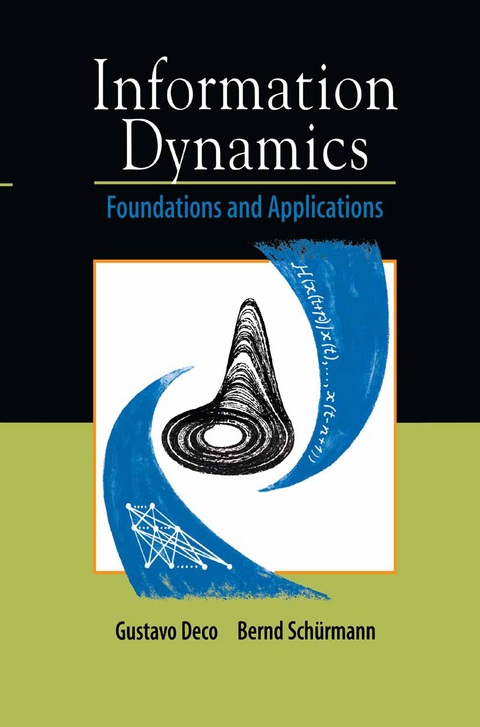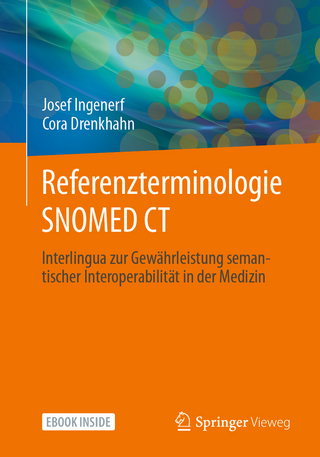
Information Dynamics
Springer-Verlag New York Inc.
978-1-4612-6510-8 (ISBN)
l Introduction.- 2 Dynamical Systems: An Overview 7.- 2.1 Deterministic Dynamical Systems.- 2.3 Statistical Time-Series Analysis.- 3 Statistical Structure Extraction in Dynamical Systems: Parametric Formulation.- 3.1 Basic Concepts of Information Theory.- 3.2 Parametric Estimation : Maximum-Likelihood Principle.- 3.3 Linear Models.- 3.4 Nonlinear Models.- 3.5 Density Estimation.- 3.6 Information-Theoretic Approach to Time-Series Modeling: Redundancy Extraction.- 4 Applications: Parametric Characterization of Time Series.- 4.1 Feedforward Learning : Chaotic Dynamics.- 4.2 Recurrent Learning : Chaotic Dynamics.- 4.3 Dynamical Overtraining and Lyapunov Penalty Term.- 4.4 Feedforward and Recurrent Learning of Biomedical Data.- 4.5 Unsupervised Redundancy-Extraction-Based Modeling: Chaotic Dynamics.- 4.6 Unsupervised Redundancy Extraction Modeling: Biomedical Data.- 5 Statistical Structure Extraction in Dynamical Systems: Nonparametric Formulation.- 5.1 Nonparametric Detection ofStatistical Dependencies in Time Series.- 5.2 Nonparametric Characterization of Dynamics: The Information Flow Concept.- 5.3 Information Flow and Coarse Graining.- 6 Applications: Nonparametric Characterization of Time Series.- 6.1 Detecting Nonlinear Correlations in Time Series.- 6.2 Nonparametric Analysis of Time Series : Optimal Delay Selection.- 6.3 Determining the Information Flow ofDynamical Systems from Continuous Probability Distributions.- 6.4 Dynamical Characterization ofTime Signals: The Integrated Information Flow.- 6.5 Information Flow and Coarse Graining: Numerical Experiments.- 7 Statistical Structure Extraction in Dynamical Systems: Semiparametric Formulation.- 7.1 Markovian Characterization of Univariate Time Series.- 7.2 Markovian Characterization of Multivariate Time Series.- 8 Applications: Semiparametric Characterization of Time Series.- 8.1 Univariate Time Series : Artificial Data.- 8.2 Univariate Time Series: Real-World Data.- 8.3 Multivariate Time Series: Artificial Data.- 8.4 Multivariate Time Series : Tumor Detection in EEG Time Series.- 9 Information Processing and Coding in Spatiotemporal Dynamical Systems: Spiking Networks.- 9.1 Spiking Neurons.- 9.2 Information Processing and Coding in Single Spiking Neurons.- 9.3 Information Processing and Coding in Networks of Spiking Neurons.- 9.4 The Processing and Coding ofDynamical Systems.- 10 Applications: Information Processing and Coding in Spatiotemporal Dynamical Systems.- 10.1 The Binding Problem.- 10.2 Discrimination of Stimulus by Spiking Neural Networks.- 10.3 Numerical Experiments.- Epilogue.- Appendix A Chain Rules, Inequalities and Other Useful Theorems in Information Theory.- A.1 Chain Rules.- A.2 Fundamental Inequalities ofInformation Theory.- Appendix B Univariate and Multivariate Cumulants.- Appendix C Information Flow of Chaotic Systems: Thermodynamical Formulation.- Appendix D Generalized Discriminability by the Spike Response Model ofa Single Spiking Neuron: Analytical Results.- References.
| Zusatzinfo | XVI, 281 p. |
|---|---|
| Verlagsort | New York, NY |
| Sprache | englisch |
| Maße | 155 x 235 mm |
| Themenwelt | Informatik ► Theorie / Studium ► Algorithmen |
| Informatik ► Theorie / Studium ► Kryptologie | |
| ISBN-10 | 1-4612-6510-X / 146126510X |
| ISBN-13 | 978-1-4612-6510-8 / 9781461265108 |
| Zustand | Neuware |
| Haben Sie eine Frage zum Produkt? |
aus dem Bereich


